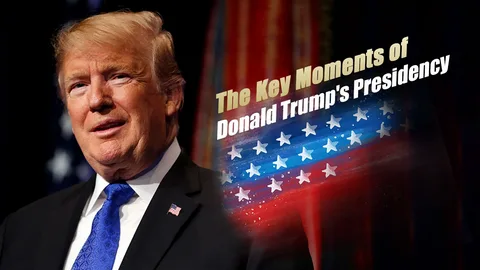Introduction
In recent years, the world of cryptocurrency has emerged as a dynamic force, intersecting with areas traditionally untouched by digital currencies, including politics. With former President Donald Trump positioning himself for a potential return to office, there’s been speculation about how his policies might shape the crypto landscape, particularly in traditionally conservative, or “Red State,” areas of the U.S.
These states, with their unique socio-economic profiles, represent a significant portion of the Electoral College map and have an outsized impact on the trajectory of national policies. Understanding the it movement in these states and Trump’s potential influence over it could shape voter dynamics in the upcoming election.
This post will explore how Trump’s re-election could impact Red State electoral votes by analyzing the trends in cryptocurrency in these regions, the broader relationship between conservatism and crypto, and the potential regulatory stance Trump might take should he secure another term. The article will also examine the strategic potential for crypto’s integration in rural and conservative America, including its implications for economic independence, voter mobilization, and job creation.

1. Trump and the Rise of Crypto in Conservative America
During his first term, Trump did not heavily prioritize cryptocurrency as part of his political agenda, maintaining a somewhat skeptical stance on the new financial asset. However, since then, the popularity of it has soared, and a new era of decentralized finance has risen to prominence. Despite Trump’s previous statements that Bitcoin “seemed like a scam,” his political influence could still significantly shape the future regulatory environment around cryptocurrency, especially in conservative Red States.
States like Texas, Wyoming, and Tennessee have embraced pro-crypto policies, positioning themselves as welcoming hubs for the industry. This trend has led to increased support for blockchain technology within conservative political spheres, presenting a landscape that a returning Trump administration could influence further.
With Trump potentially back in the White House, his approach to it could dictate the direction of these states’ policies, influencing whether they remain open to digital assets or fall back on stricter, more traditional stances.
It aligns with some of the core principles valued by Trump’s supporters, such as decentralization and financial autonomy. Red State voters often value reduced government intervention, so any Trump policies that favor it may deepen support among these voters. Trump’s influence could thus become a critical factor for conservatives who see it as a pathway to economic resilience and innovation, especially in regions impacted by declining industries.
2. The Electoral Strategy: Crypto as a Tool for Economic Growth in Red States
If Donald Trump does choose to take a more favorable stance toward it, it could become a significant component of his electoral strategy, with a focus on economic development in rural and traditionally conservative areas. Many Red States have experienced economic difficulties tied to issues like deindustrialization, agricultural challenges, and population decline. Cryptocurrency could offer a way to energize local economies through new investments and job creation.
Certain Red States have already become more receptive to it mining operations due to their lower energy costs and less restrictive regulations. Trump could capitalize on this by encouraging policies that make these states more attractive for blockchain businesses.
The creation of jobs in blockchain development, it mining, and related tech fields could be a persuasive argument for voters in economically challenged areas. Trump’s support for crypto initiatives could align with his broader message of “America First,” particularly if he can frame crypto as a means to create jobs, boost rural economies, and reduce dependency on foreign investment in technology.
Should Trump amplify these policies, it could increase his appeal in key Red States that rely heavily on the Electoral College. States like Texas, Georgia, and Ohio play critical roles in election outcomes, and the addition of cryptocurrency-friendly policies could shift the voting calculus in his favor. If Trump incorporates crypto into his platform, he could attract not only his existing base but also independent and younger voters in these regions who are invested in the future of digital finance.
3. Regulatory Approaches and Red State Response to Trump’s Crypto Policies
The approach that Trump may adopt toward its regulation is another area of intrigue. On one hand, Trump could appeal to conservative and libertarian-minded voters by advocating for minimal federal regulation of crypto.
This position would align with the ethos of many Red States, where smaller government and individual freedom are highly valued. On the other hand, a more controlled regulatory stance could reflect Trump’s traditionalist views and concerns over economic stability.
Many Red States, particularly those with strong Republican leadership, favor less restrictive regulation and have passed legislation that encourages crypto business innovation. If Trump’s approach emphasizes less intervention, it could be a signal to these states to further strengthen their pro-crypto positions.
States such as Wyoming, which has pioneered crypto-friendly policies and legally recognized decentralized autonomous organizations (DAOs), might find alignment with Trump’s potential hands-off approach, bolstering their support in the Electoral College.
Conversely, if Trump takes a more moderate regulatory approach, this could reassure skeptics worried about the risks of it and establish him as a stabilizing force for the market. For voters in Red States who are conservative in fiscal matters, Trump’s stance on providing clear but balanced regulation could be a compelling factor, appealing to those who value the long-term sustainability of financial systems.
4. Crypto as a Voter Mobilization Tool in Red States
Cryptocurrency has the potential to serve as more than just an economic tool—it can also be a powerful means of voter mobilization. Younger generations and tech-savvy voters in Red States are increasingly involved in crypto markets, and Trump’s backing of it could inspire a more robust turnout among this demographic.
In an era where traditional financial systems are viewed with skepticism by young voters, it aligns with the values of autonomy and technological innovation, which could be especially attractive in regions with limited access to traditional financial resources.
The recent embrace of blockchain technology in various sectors has shown that crypto is becoming integrated into daily life beyond just investments. Crypto-based voting initiatives, for example, are emerging in other countries as secure ways to conduct elections. If Trump hints at embracing blockchain for secure voting, he may be able to capture the attention of voters interested in transparency and tech-driven solutions.
This approach could become particularly effective in Red States where voting integrity is a central concern for many conservatives. By advocating for blockchain-based voting, Trump could appeal to both his base and undecided voters who prioritize election security and innovation.
Conclusion
As we look ahead to the possibility of a second presidential term for Donald Trump, it’s clear that his potential policies on cryptocurrency could have significant ramifications for Red States and their influence in the Electoral College.
From economic development to regulatory reform, Trump’s stance on crypto could enhance his appeal in conservative states, using digital currency as both a financial and political tool. Whether through job creation, economic resilience, or voter mobilization, the crypto connection may provide Trump with a unique advantage in his 2024 campaign.
The intersection of cryptocurrency and conservative politics is still developing, but its influence on electoral dynamics is undeniable. Red States, with their values of independence and economic growth, may find a new ally in Trump’s it vision, should he choose to embrace it fully. As the conversation around digital assets continues, it remains to be seen how Trump’s potential leadership will shape the it landscape across the country.
What do you think? Could crypto become a deciding factor in Red States’ support for Trump in the upcoming election? Share your thoughts in the comments below, and let’s discuss!






